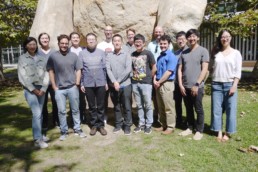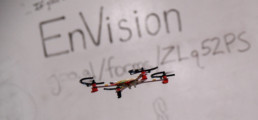Featured
New PhDs, New Students
Big changes this fall, and all of them good! In the last two weeks two new students have joined the group (Welcome TJ and Nara!) and two have finished their PhDs (Congrats Drs. Jian Yang and Lu Zhang!). We've also recently said a fond farewell to Joe Izraelevitz, a post-doc who's now a professor at CU Boulder. I look forward to great things from all them.
PIRL Blog Launches
Following the success of the inaugural Persistent in Real Life workshop (PIRL'19), we've launched a blog focused on how to build systems using persistent memory. Check it out.
Kunal Goes to PODC
Newly minted Ph.D. and NVSL alumnus Dr. Kunal Korgaonkar jetted to Toronto to present his work on scalable, distributed algorithms that provide a path to realize large persistent memory systems. The work was presented at ACM Symposium on Principles of Distributed Computing (PODC) ‘19 - a flagship distributed computing conference. After graduating last spring, Kunal has taken a position as a postdoctoral research fellow at Technion (Israel) where he is working on building real in-memory computing systems from the ground up.
My Quadcopter Class is Going to SIGGRAPH
I'm presenting my paper describing a class in which students build a quadcopter from scratch at SIGGRAPH next week in LA. If you want to build your own, the materials are all on github.
First PIRL Conference Wraps Up
The Non-Volatile Systems Lab (in conjunction with SNIA) hosted the first Persistent Programming In Real Life (PIRL) conference earlier this week. PIRL is a small meeting of software developers on the front lines of understanding how to use new persistent memory technologies.
We had stellar slate of speakers and keynotes from industry and academia. You can check out all the detail at the PIRL website.
NVSL Publishes First Characterization of Intel 3DXPoint DIMMs
This week we released the full version of our report detailing the performance of Intel's 3DXPoint DIMMs (technically "Intel DC Optane Memory Modules").
The key takeaway is that these DIMMs are not just 'slower, persistent DRAM'. They have their own idiosyncrasies that programmers will have to wrestle with.




